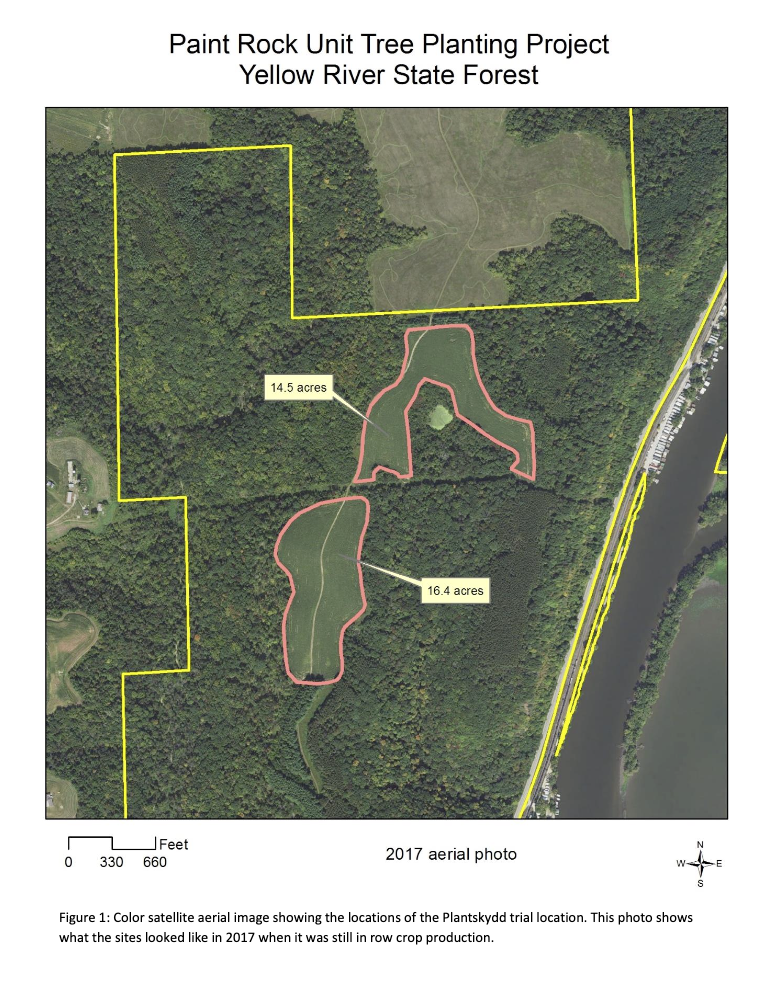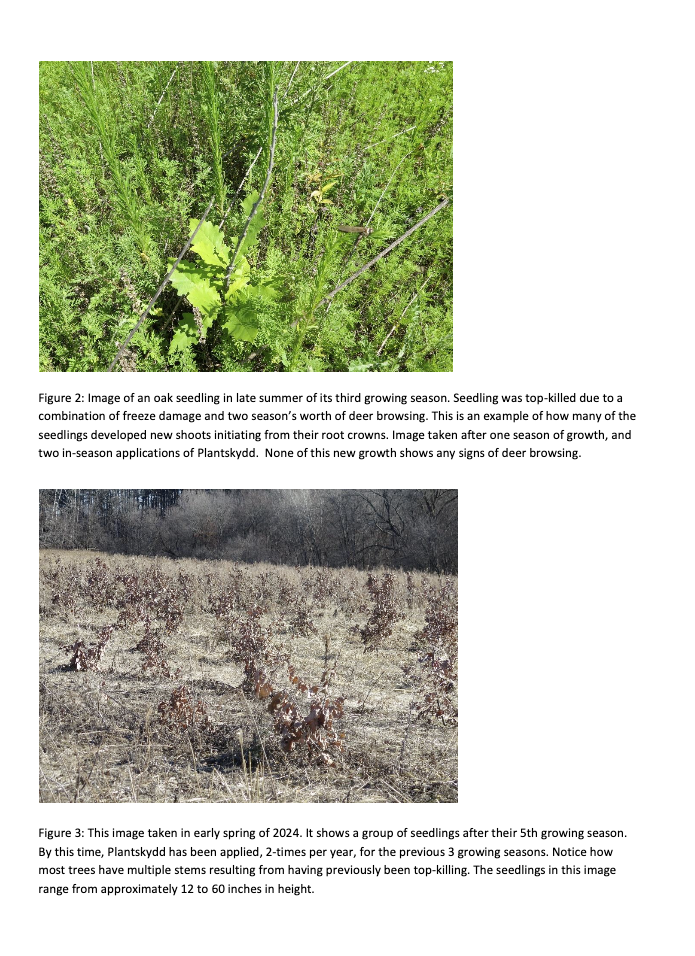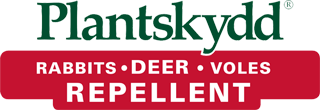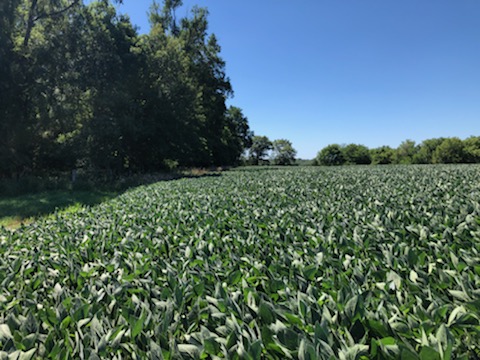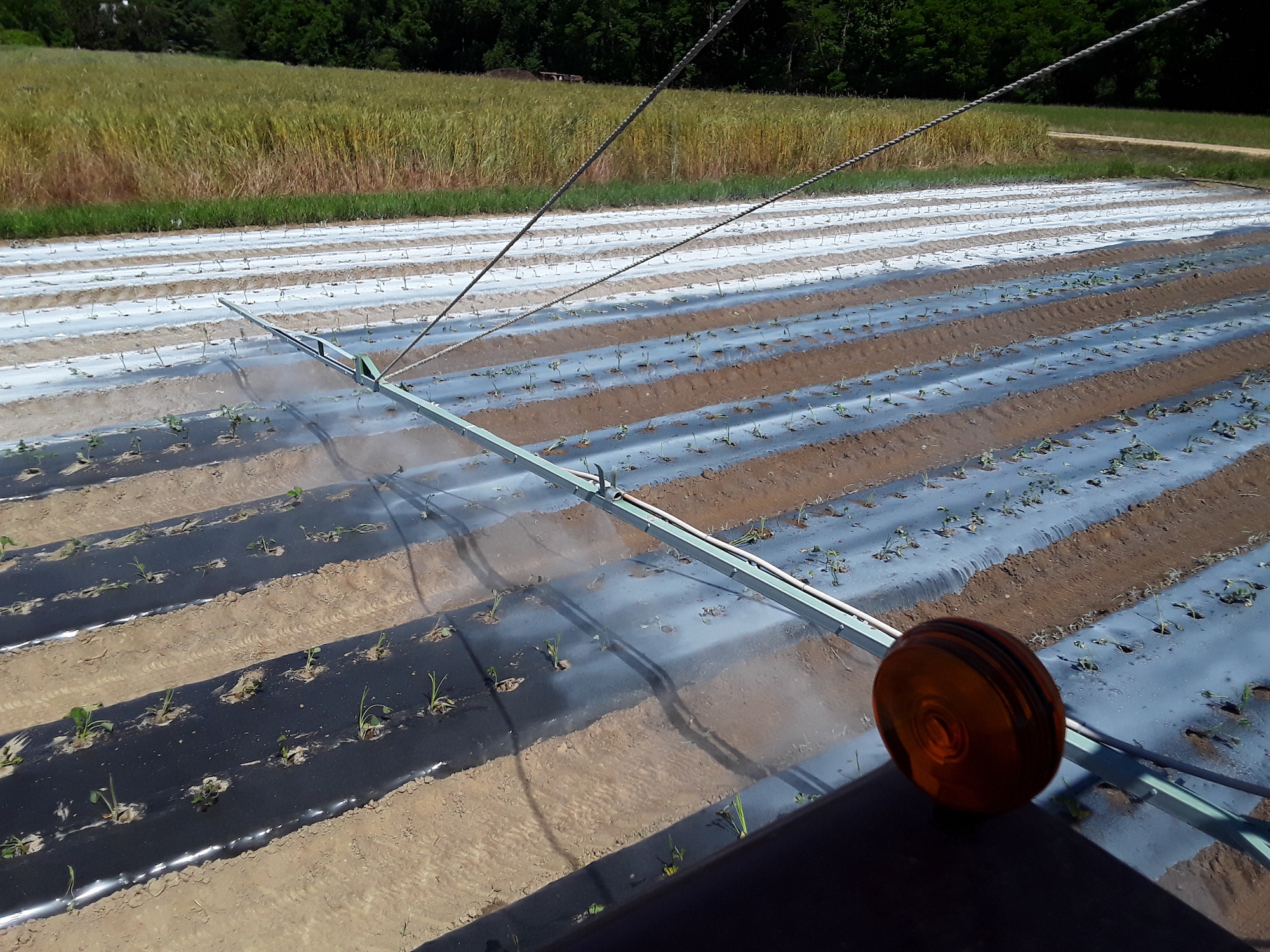Deer Depredation Control Demonstration Project at Yellow River State Forest (YRSF), Allamakee County, Iowa, USA.
Submitted by Bruce Blair, Area Forester
Background
In the spring of 2019, staff of YRSF planted 20,000 bareroot seedlings on 31 acres of retired crop fields. (See figure 1.) The major objectives for planting these fields included: developing quality wildlife habitat, reducing forest fragmentation, improving water and air quality, reducing storm water runoff and producing quality hardwood timber.
Table 1: Species and numbers of seedlings planted.
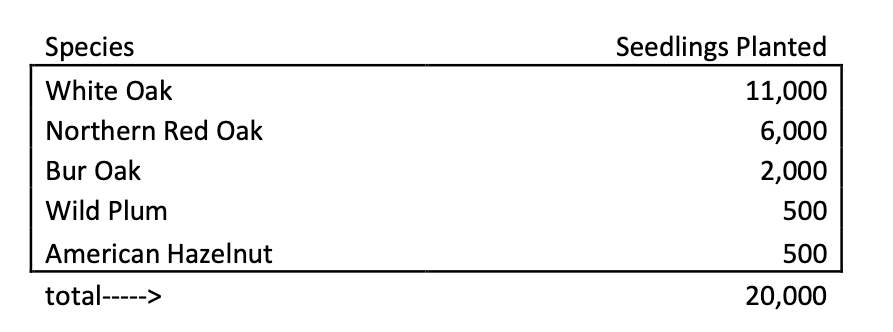
The planting stock was 17-24 inch bareroot seedlings purchased from the State Forest Nursery in Ames, Iowa. The soil planted into was Fayette silt-loam. The seedlings received plenty of moisture during their first growing season. However, we did observe high levels of deer browse damage to all species, especially to the oaks. In spite of this, the estimated overall survival rate going into the fall was very good.
At the start of the second growing season, the site experienced a late freeze which did extensive damage to the first flush of leaves. The seedlings did recovered with a new flush of leaves in the following weeks. However, many of the seedlings got top-killed and had to develop new shoots generated from their root crowns. In addition to the late freeze, extensive deer browsing was observed throughout the second growing season. Going into the fall, we observed some seedling mortality and with even more seedlings top-killed from the extensive deer browsing. Based on these observations it was decide that something needed to be done to control the deer browsing, otherwise the outcome of the planting would be in serious jeopardy!
The seedlings had been purchased with funding from a grant from the nonprofit organization, One Tree Planted, which is a 501 charity with a mission to help global reforestation efforts. For obvious reasons, we did not want to lose any more trees.
Installing a deer proof fence did not seem feasible due to the size and shape of the planting layout. Also, such a large fence would be very costly and troublesome to maintain. After consulting with Ross Ellingson, Iowa DNR Depredation Biologist, we landed on the idea of trying out Tree World’s Plantskydd brand animal repellent. This product comes as a powder that is mixed with water into a thick slurry which is then mixed with additional water to the final desired concentration for application. It is believed Plantskydd’s mode of action is to cause a fear response which encourages the deer to leave the application area.
In early 2021, Ross reached out to Richard Getzkow, Sales Representative from Tree World. Richard offered their Plantskydd product at a discount with the stipulation we would become collaborators. In return, we are helping collect information on the product’s effectiveness and providing public access to our demonstration site. The location of the demonstration site is at sections 27 & 34, T97N, R3W, Allamakee County, Iowa. (UTM coordinates -91.1803° W, 43.1795° N decimal degrees lat. and long.)
Plantskydd Trial, Year 1
Project Description: Tom Brown of Brown’s Forestry was chosen as the forestry contractor to do the first year’s applications. The trees had been planted in rows 10 feet apart with a seedling planted every 6 feet down the rows. Tom was instructed to apply 1 kg of Plantskydd per acre on the 31 acres. The product was applied onto 4-foot-wide bands centered over the top of each tree row. The first application occurred on May 5, 2021. The day was cool (50 to 60 degrees F) with clear skies and moderate winds. A second application was applied on July 8th. The wind was again light to moderate. Tom reported having difficulties with the product clogging his strainers numerous times throughout the process. Richard informed me they had some quality control issues that year. All our applications in subsequent years have gone smoothly with very few problems. A surfactant/sticker was added to the spray mix. The non-ionic surfactant sticker used in year 1 was called, Aacess (Correct spelling. The product’s active ingredient is limonene.)
Application costs: Total Plantskydd applied in year 1 was 60 kg at a discounted cost of $1259.82. Labor costs for the two applications (62 total acres) was $2162.00. Total cost for the two applications came to $55.21/acre per acre.
Observations, Year 1: We noticed a night-and-day difference in the level of deer browse after using the Plantskydd. The amount of deer browsing that was observed went from nearly 100% of trees browsed in the summer of 2020 down to nearly 0% of trees browsed throughout the summer of 2021! On October 7th, we held our annual Forestry Field Day, with approximately 65 people in attendance, where we showed the group this Plantskydd demonstration.
Plantskydd Trial, Year 2
Project description: In 2022, we followed the same treatment protocol as in 2021. Tom Brown again applied 1 kg of Plantskydd per acre per application on the 31 acres on 4-foot-wide bands over the top, once on May 22nd and again on July 25th. That year we used a different surfactant called Cornbelt© ShepardTM + DRA (active ingredients Beta-hydroxy Tricarballylate, Alkyl Polyglucoside, Monocarbamide Dihydrogen Sulfate and Acrylamide Sodium Acrylate Linear copolymer 34.75%). This product is a surfactant + Drift Reduction Agent (DRA).
Application costs: Application costs were identical to 2021 with labor and product costing around $55.21/acre per acre.
Observations, Year 2: That year, the contractor reported having no difficulties with the product plugging his strainers. Again, we noticed very little deer browsing throughout the growing season, and we noticed a lot better seedling growth and vigor by the end of the growing season!
Plantskydd Trial, Year 3
Project description: In 2023, we used the same protocol as the previous year, with applications made
on May 22nd and July 25th. We used the same Plantskydd concentration with the same surfactant + DRA.
Application costs: Same as the previous year at $55.21/acre for the two applications.
Observations, Year 3: Again, Tom Brown reported no difficulties with clogging during the applications. Again, very little sign of deer browsing was observed. Again, we noticed improved growth and vigor in the young seedlings!
Conclusions
After three growing seasons, Plantskydd repellent has shown to be very effective at controlling deer browse damage. The strainer plugging problems that occurred in 2021 were not an issue in 2022 or 2023. I think it would be a great idea to test this product on tree planting sites where deer populations are substantially higher than occurs at YRSF. Our intention is to continue using Plantskydd for an additional year or two until plenty of the trees have grown above the deer browse line, which is around 5 feet in height.
Contact information:
- Richard Getzkow, Sales Representative for Tree World Plant Care Products, Inc., richard@treeworld.com, (phone 1-800-252-6051)
- Tom Brown, Brown’s Forestry, brownforestry@line.com, (phone 563 380-1199)
- Ross Ellingson, Iowa DNR Depredation Biologist for NE Iowa, Ross.Ellingson@dnr.iowa.gov, (phone 563 929-6001)
- Bruce Blair, Area Forester, Yellow River State Forest, Bruce.Blair@dnr.iowa.gov, (phone 563 586- 2090)
